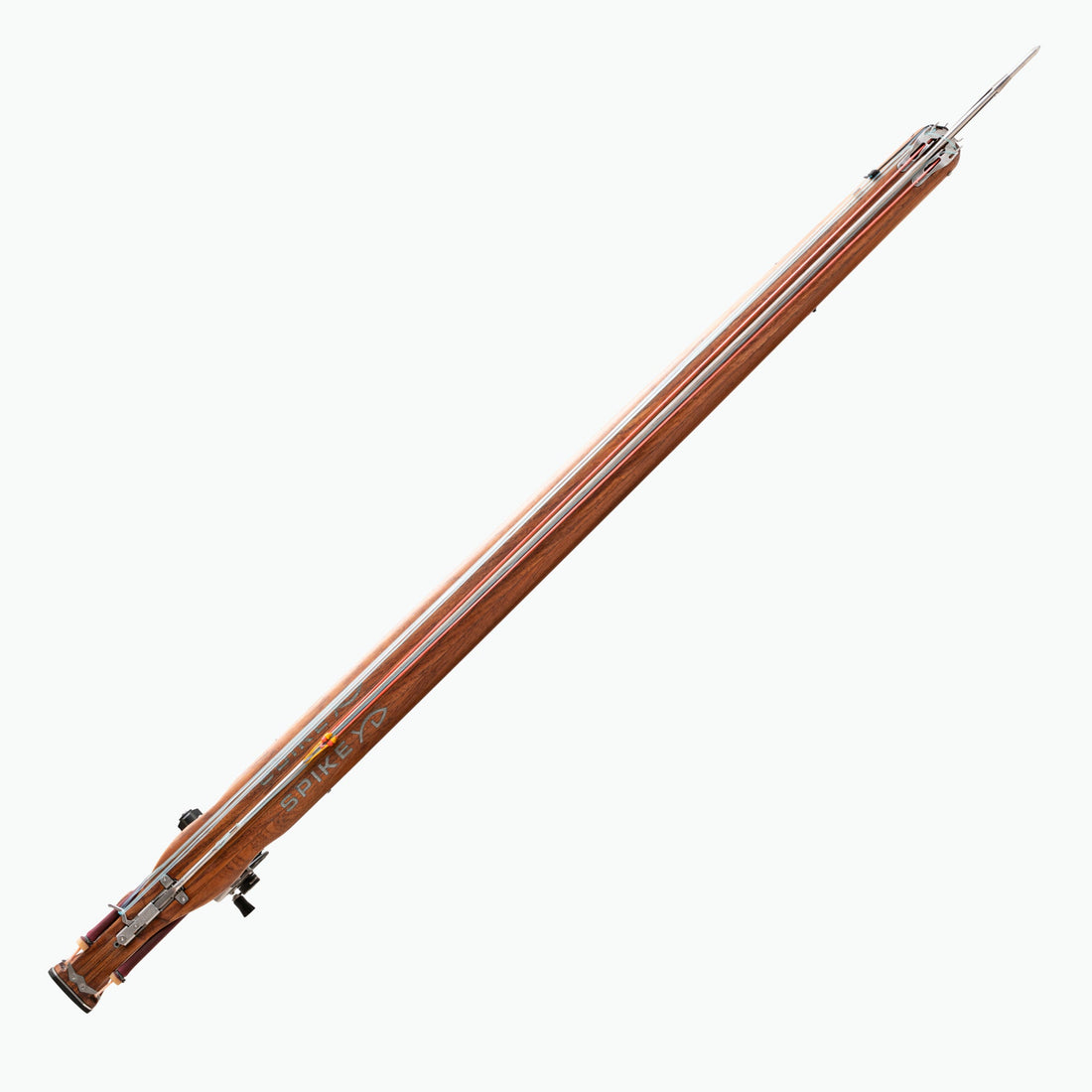
The Physics Behind Speargun Recoil – and How We Minimized It
Share
Recoil is a fundamental physical consequence of any system that accelerates mass in one direction. In the case of spearguns, the rapid launch of a heavy shaft generates an equal and opposite reaction—a backward force experienced by the shooter. While often overlooked in conventional designs, recoil significantly affects shot stability, comfort, and long-term shooting precision.
At SPIKE, we approached recoil not as a secondary side effect to be tolerated, but as a design parameter to be actively minimized through mechanical and ergonomic innovation. The result is a system that delivers maximum shaft velocity with substantially reduced impact on the shooter.
Recoil in Conventional Speargun Design
In standard band-powered spearguns, particularly high-powered models, the main bands are mounted on the upper side of the barrel. Upon release, the energy stored in the bands is transferred directly into the shaft. At the same time, the gun experiences a reaction force in the opposite direction, often concentrated near the muzzle.
This results in several predictable effects:
- Angular kick or “flip-up” due to the distance between the force vector and the shooter’s grip point
- Vibration and resonance propagating through the body of the gun
- Fatigue, instability, and reduced accuracy, particularly with repetitive use or heavy setups
These effects are further amplified when bands are stopped abruptly at the front end of the gun, far from the shooter’s hand, producing a long moment arm and rotational instability.
Inverted Roller Geometry and Force Redirection
SPIKE spearguns employ a fully inverted roller configuration in which the primary elastic bands are routed along the underside of the gun. Upon firing, the bands contract in the opposite direction of the shaft’s motion.
This inversion yields multiple mechanical advantages:
- The force generated by the bands is applied closer to the gun’s center of mass, reducing torque
- Backward-moving bands counter a portion of the forward momentum of the shaft, dampening recoil at the source
- The absence of upward-facing bands eliminates vertical asymmetry in the system and allows for a clear, uninterrupted sight line along the top of the gun
In effect, this reorientation of the energy path minimizes both linear and rotational recoil components without requiring additional mass or complexity.
Pulley-Based Energy Transmission
To further refine force application, SPIKE incorporates a 1:2 pulley system that modulates the energy transfer from bands to shaft. This setup slows initial acceleration while maintaining high final velocity, effectively stretching the energy release over time.
The result is a more progressive recoil profile. The shooter perceives the shot as smoother, with less impulse and a more controlled feel—particularly valuable in situations requiring rapid follow-up shots or sustained accuracy over extended dives.
Reengineered Line Stopper System
One of the often-neglected contributors to recoil-related disturbance is the behavior of the shooting line. In many inverted roller spearguns, the line tightens abruptly at the end of the shot and can become difficult to release or reset without tools.
SPIKE addresses this through a custom-designed line stopper system that ensures the drive line is cleanly captured and remains accessible for immediate reset. While not a direct recoil control mechanism, it eliminates a common source of post-shot vibration and mechanical resistance, contributing to a more stable shooting cycle overall.
Biodynamically Rotated Ergonomic Handle
Beyond mechanical systems, the interface between gun and shooter plays a critical role in perceived recoil. Most speargun grips are modeled after firearm designs, optimized for straight-line forces on land rather than multidirectional aquatic recoil.
The SPIKE handle is anatomically rotated to align with the longitudinal axis of the forearm. This adjustment ensures that the primary reaction force is transmitted through the skeletal structure rather than being absorbed by the wrist or thumb. The result is significantly lower perceived strain, improved recoil absorption, and reduced micro-movements at the point of release.
Conclusion
Recoil is not eliminated; it is redistributed and controlled. At SPIKE, we have reduced recoil by optimizing the mechanical path of energy transfer, improving system symmetry, and engineering a more natural connection between the speargun and the shooter.
This integrated approach yields a platform that is both powerful and stable, offering enhanced precision without sacrificing performance. It is not a compromise—it is a refinement of fundamental principles applied with purpose.
